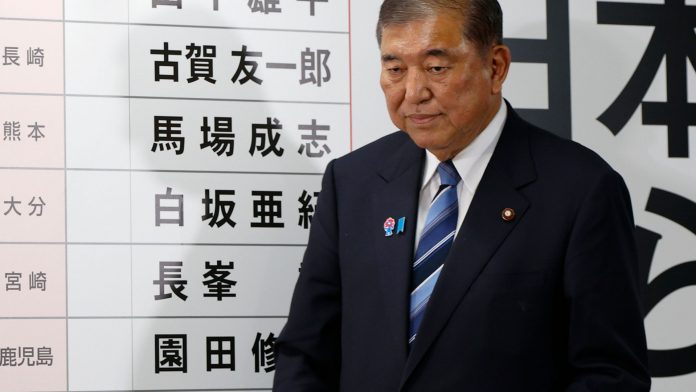Japan’s Liberal Democratic Party and its partner, Komeito, both part of Prime Minister Shigeru Ishiba’s ruling coalition, lost control of the upper house in the election on Sunday, July 20, NHK reported. Maintaining control was Ishiba’s main goal in this election, but he told the media that he intends to stay in his role nonetheless.
The prime minister and the ruling coalition also lost the lower house in October, Reuters wrote, putting Ishiba and his administration in a vulnerable position. The LDP has not lost a majority in both the upper and lower house in years.
“It’s a tough situation. I take it humbly and sincerely,” Ishiba said in an NHK interview, adding: “I will fulfill my responsibility as head of the No. 1 party and work for the country.”
Meanwhile, Sohei Kamiya, the leader of the right-wing Sanseito opposition party, said on NHK that he was pleased with the results, as they secured more seats than he’d initially expected to win.
The Liberal Democratic Party and Komeito needed to win 50 seats to keep their majority in the upper house. As of Sunday evening, the coalition only had 46, with only two more seats yet to be decided.
The Associated Press wrote key issues in Japan’s election included rising prices, dropping wages and social security payments. In addition, restrictions on foreign residents and visitors were also top of mind for voters. Sanseito has been on the forefront of this movement, with the party adopting a “Japanese First” platform, including a proposal for an agency to handle policies about foreigners.
Xenophobic rhetoric in this election cycle sparked protests, the AP wrote.
Other parties such as the Democratic Party For the People and Constitutional Democratic Party of Japan also made gains in this election cycle.
What does this mean for US tariffs on Japan?
Ishiba’s defeat in this election could cause challenges for him, as Japan, like other U.S. trading partners, has until Aug. 1 to make a deal before a 25% tariff is imposed. U.S. President Donald Trump, when announcing the new deadline, said there will be no extensions this time.
While Japan’s inflation eased in June, food prices are still high. In Japan, according to the AP, the price of rice has doubled from what it was in 2024 because of supply shortages. People have resorted to “panic buying” as the situation has not improved. Trump, in a Truth Social post, complained that Japan “won’t take our RICE, and yet they have a massive rice shortage.”
On Friday, July 18, Treasury Secretary Scott Bessent met with Ishiba in Tokyo, and afterward, said on X “a mutually beneficial trade agreement between the United States and Japan remains within the realm of possibility” and that he looks forward to continuing talks in the future.
“A good deal is more important than a rushed deal,” Bessent said.
Ishiba, The Japan Times wrote, urged Bessent in remarks to reporters to continue talks with Ryosei Akazawa, Japan’s chief tariff negotiator. Bessent did travel to Osaka with Akazawa on Saturday, July 19 to go to U.S. National Day events at the World Expo, but there were no official tariff talks. Akazawa, though, said he plans to visit the United States again in the near future.

